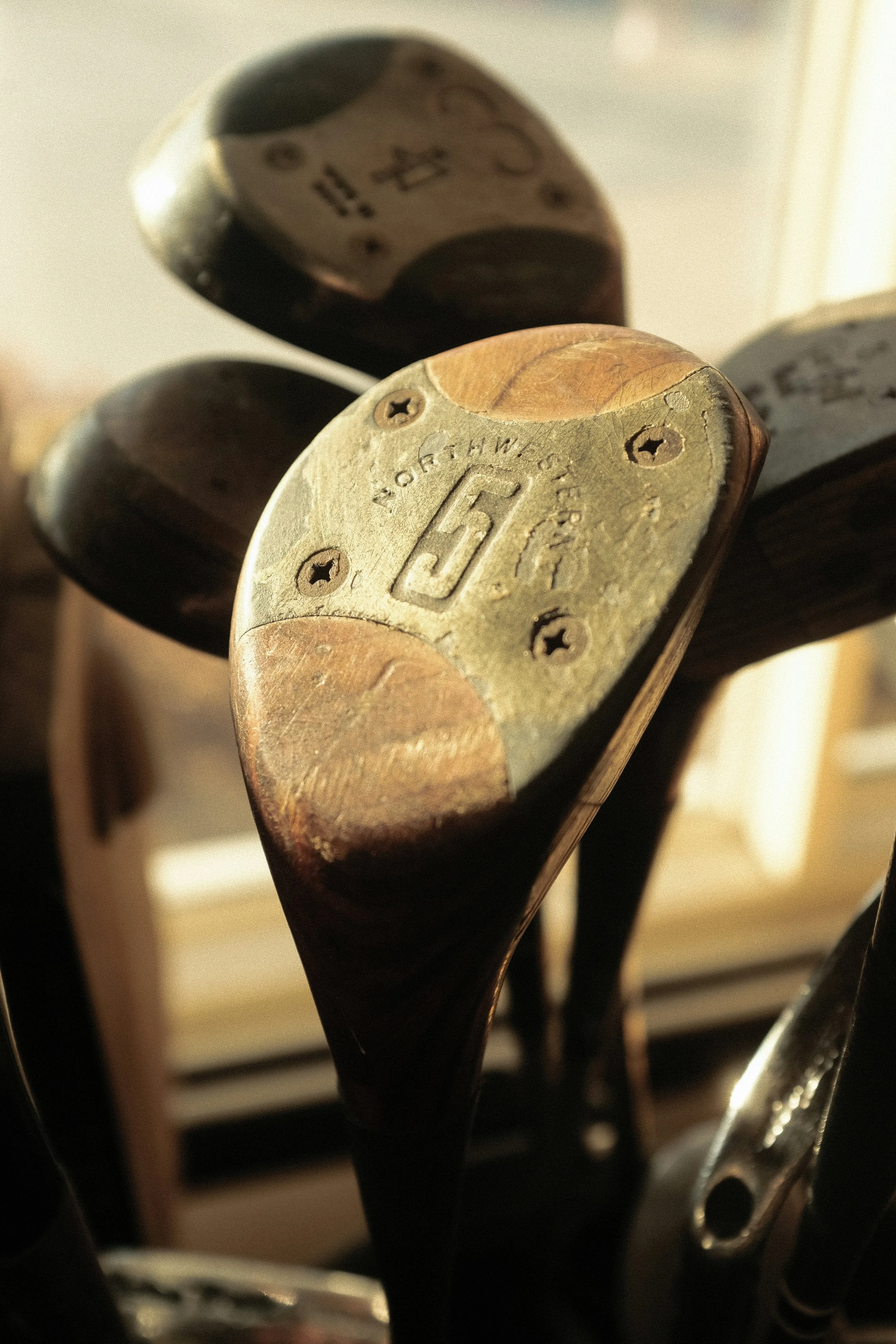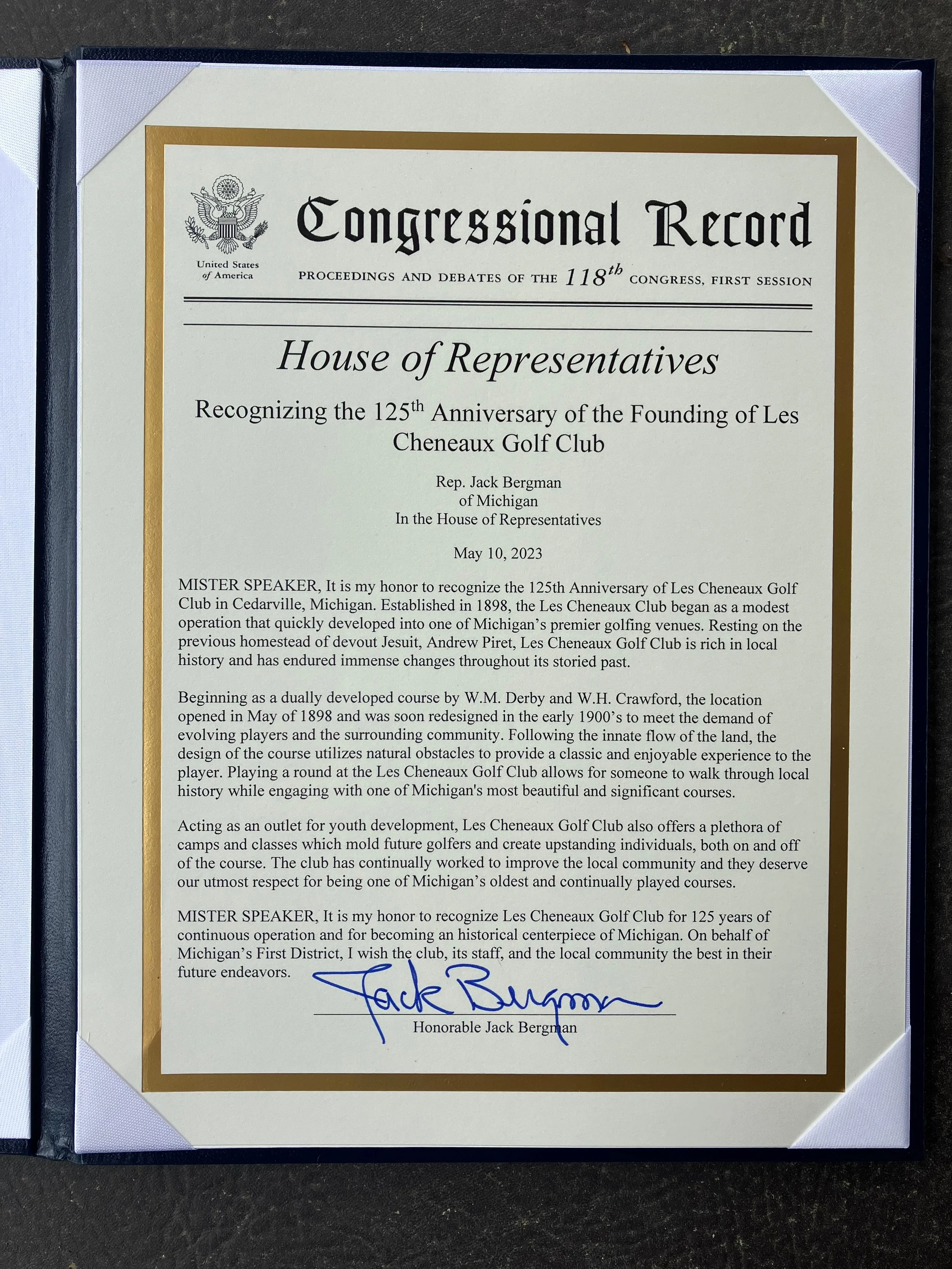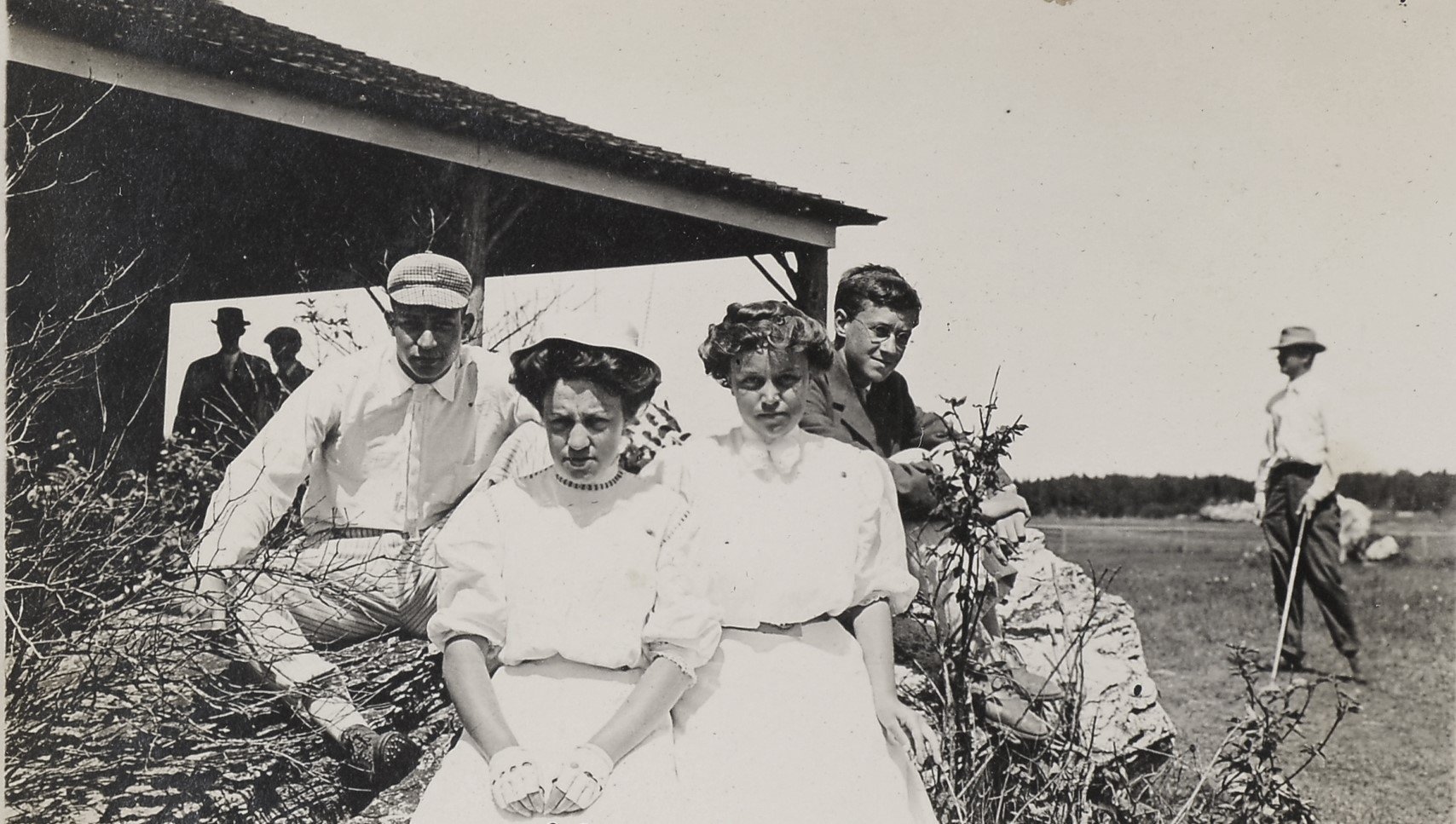
Course History
The Les Cheneaux Club Golf Links has been played continuously since the course opened in May 1898. The links were developed by the Les Cheneaux Club which originated ten years before across the Snows Channel on Marquette Island’s Club Point.
The links were laid out by W.M. Derby and W.H. Crawford on land then owned by the Derby family known as Derby Farm. The course was lengthened in the early 1900’s by Club president Carl Leopold, the father of famed naturalist Aldo Leopold.
Golf “links” refers to the land on which the game is played, originally the sandy dunes on the shores of Scotland that link the sea and land. These golf courses are open and laid out with little distance between greens and tees so they be walked during a golfer’s round. They have firm, sparsely irrigated, and un-manicured fairways with characteristic vegetation of heather, gorse, and coarse grasses. A links style course located inland is a heathland course.
The Les Cheneaux Club Golf Links allows players to experience golf with a sense of the game’s origins and join generations of Les Cheneaux visitors and residents who have enjoyed the course since its founding.
Before the golf links, this site held a significant place in Les Cheneaux area history. The golf links sit on land that was once “La Ferme”, home of Father Andrew D. J. Piret (1804-1875), the first non-native American to permanently reside in the Les Cheneaux Islands. Father Piret was a Jesuit missionary, outdoorsman, and friend to the Chippewa and Ottawa peoples who first inhabited the Les Cheneaux area.
Born in Belgium, Father Piret studied medicine before his religious education. He came to northern Michigan in 1846 and ministered to Mackinac Island and the eastern upper peninsula. Around 1850 he purchased about 100 acres on the site which is now the golf course and built a log home and chapel when his priestly work allowed.
La Ferme (the farm) was well known in the region and open to all travelers who passed by. Piret ventured often from his homestead to minister to the area native Americans. He spoke the native language and his dual education allowed him to minister to both the spiritual and physical needs of his flock. Fire claimed La Ferme in 1868 and Father Piret moved to Cheboygan where he finished his ministry. He owned La Ferme until his death.
Father Piret
Our Historic Photos











